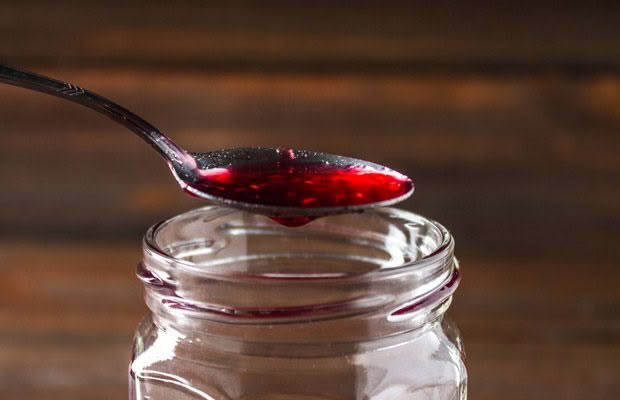The secret to sugar-free jam that actually tastes good

You might think sugar is vital for good jam, but food writer Kristina Jensen’s experiments show it’s not.
Words: Kristina Jensen
Ah, sugar. It’s known as ‘white death’ in our family. That’s the name given to it by a chap we met 25 years ago who was convinced sugar was the most poisonous food you could put into your body. Interestingly enough, this is what science is starting to tell us.
My journey with the sweet stuff has been a bit up and down. I’ve struggled with a sweet tooth all my life. Despite trying many ways to wean myself off it, I still have sugar in the house. My ‘sweet’ recipe book is full of delicious cakes to tempt me.
The consumption of any sugar triggers the release of dopamine, the chemical in the brain responsible for feelings of reward and pleasure. Sugar makes us feel good. I used to adopt the ‘everything in moderation’ approach, especially as I didn’t want to return to my anorexia days. Then, every mouthful containing sugar was swallowed with a large amount of guilt.
You might think buying sugar-free products is the answer, but it’s a very confusing, often misused label, especially in commercial products. Many companies use artificial sweeteners such as aspartame, saccharin, or maltitol, but these may still raise blood insulin levels.

Most of us think of sugar-free as meaning sucrose-free (as in cane sugar), but there’s no such thing as a ‘sugar-free’ diet. Sugar is naturally present in most foods, under a variety of names. There’s glucose and fructose in vegetables and fruit. Lactose is a natural sugar found in dairy. Sucrose refers to sweeteners refined from sugar cane or sugar beets (a mixture of glucose and fructose). Maltose is in foods such as cereal and beer.
Sugar is a complex product. Refined sugars – including so-called ‘healthy’ sugars like coconut sugar, processed honey, agave, and yacon syrup – are ‘simple’ or short-chain carbohydrates. These are easy for the body to process and our systems get flooded, leading to a spike in blood insulin levels. Such a hit almost always leaves me craving more.
A while ago, I stopped eating and making jam. That’s like cutting off a limb when you’re a food writer. I tried reducing the amount of sugar, but that felt like cheating. So I was pleasantly surprised to find that many fruits can be preserved to a jam-like consistency with no sugar, or with a smidgeon. That’s thanks to our wonderful friends, Jennie Upton and Murray Grimwood (yes, the same Murray who used to write for NZ Lifestyle Block).
Jennie’s tips for great low or no-sugar jam
Jennie says she’s found the big problem with low or no-sugar recipes is people miss the ‘jammy’ mouthfeel that sugar contributes. The secret: chia seeds, which are a great thickener, producing a good jammy texture.
She says her number one choice of fruit for a low or no-sugar jam is berries: they’re naturally low in sugar, and usually contain pectin, which helps with the acidity necessary for preserving.

High quality fruit is important too. Jennie often mixes berries together, freezing them if she doesn’t have enough for a batch of jam from one day’s harvest. Raspberries and blackberries are good to use as a base, with currants, gooseberries, and blueberries.
Don’t add any water to the berries. Jennie has found they have plenty of liquid in them; any additional moisture makes the jam too runny.
3 TIPS FOR SUGAR-FREE BOTTLED FRUIT
I asked my preserving friends for their advice, and they all said the same thing: you don’t need sugar.
1. Boost the acidity to prevent the fruit from discolouring
Use either lemon juice (1 cup per litre) or citric or ascorbic acid (1 tsp per litre of water). Many people prefer citric acid because it doesn’t affect the taste.
2. Hot pack the fruit
Heat the fruit in hot (not boiling) liquid that contains lemon juice or acid until just cooked. Carefully transfer into clean, hot, sterilised jars with a slotted spoon. Pour the hot liquid over the fruit until overflowing, then screw on the lid.
3. Follow up with a water bath
This canning method cooks and sterilises at the same time. Place jars in a pot of water that covers the jars by 2cm and heat in a 100°C oven for 15-20 minutes. I don’t have a specialist canning pot, so I use a big stainless steel pot with a tight-fitting lid. I sit a round cake rack in the bottom for the jars to stand on.
MORE HERE
Love this story? Subscribe now!
 This article first appeared in NZ Lifestyle Block Magazine.
This article first appeared in NZ Lifestyle Block Magazine.
